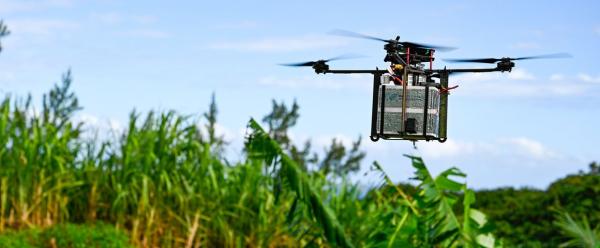Results & impact 10 October 2025
- Home
- Press area
- Press releases
- Musa biodiversity
A clear picture of the biodiversity of the genus Musa

Fruits of the species Musa yunnanensi © M. Chabannes, CIRAD
Many species of the genus Musa are found in continental Southeast Asia, in the northernmost part of its natural diversification are. However, little is known about their distribution and intraspecific variability. Collection missions in partnership with the French Natural History Museum and research institutes* in Vietnam, Laos and China allowed the morphological and genetic characterization of more than 200 specimens primarily belonging to the species Musa balbisiana, M. itinerans, M. acuminata and M. yunnanensis. The scientific team, coordinated by CIRAD in partnership with the Alliance of Bioversity International and CIAT were this able to confirm continental Southeast Asia as the main diversification centre for the genus Musa.
An unprecedentedly broad degree of diversity
"This is the first time such a degree of diversity has been described between wild species of the genus Musa, or within each species. Until now, that biodiversity has only been very partially represented in the main ex situ collections worldwide", says Christophe Jenny, a CIRAD geneticist who coordinated the study.
As he sees it, "We urgently need to be able to protect these threatened species and to preserve their potential to be used as wild parents of the cultivated forms of bananas". Research teams in the countries surveyed have launched programmes to safeguard that diversity.
A human impact on the diversity of wild species
Although the species studied are seen as wild, they have been affected to various extents by human activity.
Musa yunnanensis and M. acuminata subsp. burmannica are the most strictly wild forms, and are used to feed livestock. They are only rarely found outside the areas to which they are endemic.
M. itinerans is not grown as such either, but is actively gathered in the wild, resulting in geographically structured diversity.
The diversity of M. balbisiana, is largely distributed and geographically structured by human activities. This species, whose fruits are eaten despite the fact that they contain seeds, and whose vegetative parts are used extensively, can be seen as virtually domesticated.
These various degrees of human impact on diversity and its structuring, from simple opportunistic gathering to true domestication, shed light on the evolutionary history of bananas. They provide a clearer explanation of the diversity of cultivated banana varieties, which has been built among other things on the combined use of several of these species.
In the next stage of the study, the scientific team intends to describe and explain the diversity and originality of the cultivated forms observed during the collection missions.
The study also demonstrated for the first time the existence of spontaneous interspecific hybrids between the two species Musa yunnanensis and M. acuminata. This spontaneous hybridization has led the scientists to question the definition of the species belonging to the genus Musa.
* funded by the Agropolis Foundation and the SEP2D research programme
** Institute of Tropical Biology, Northern Mountainous Agriculture and Forestry Science Institute (Vietnam); Cabinet of the Lao Academy of Science and Technology, (Laos); Kunming Institute of Botany (China)
Reference
Jenny C, Sachter-Smith G, Breton C, Rivallan R, Jacquemoud-Collet J-P, Dubois C, et al. (2024) Musa species in mainland Southeast Asia: From wild to domesticate. PLoS ONE 19(10): e0307592. https://doi.org/10.1371/journal.pone.0307592



























